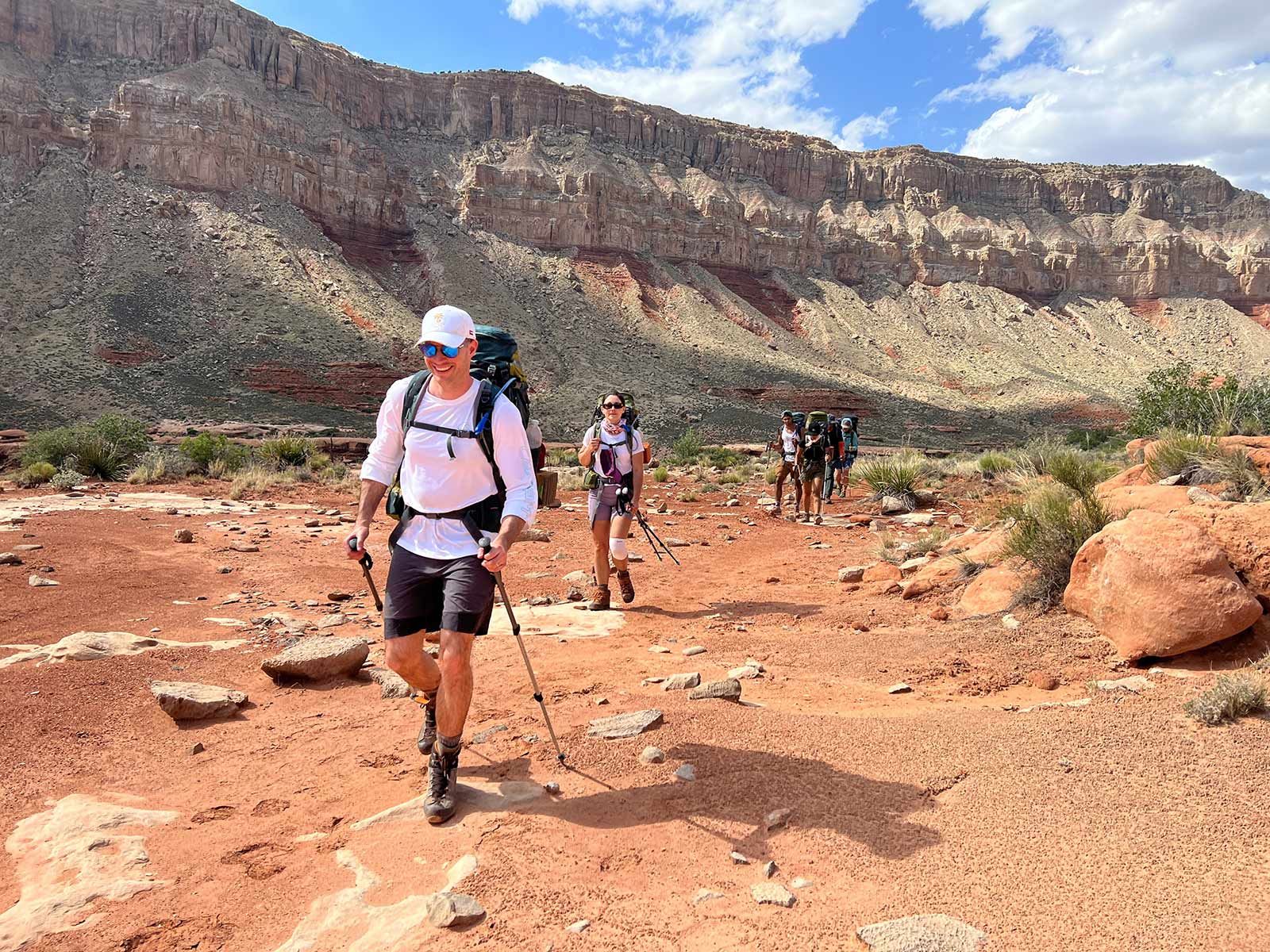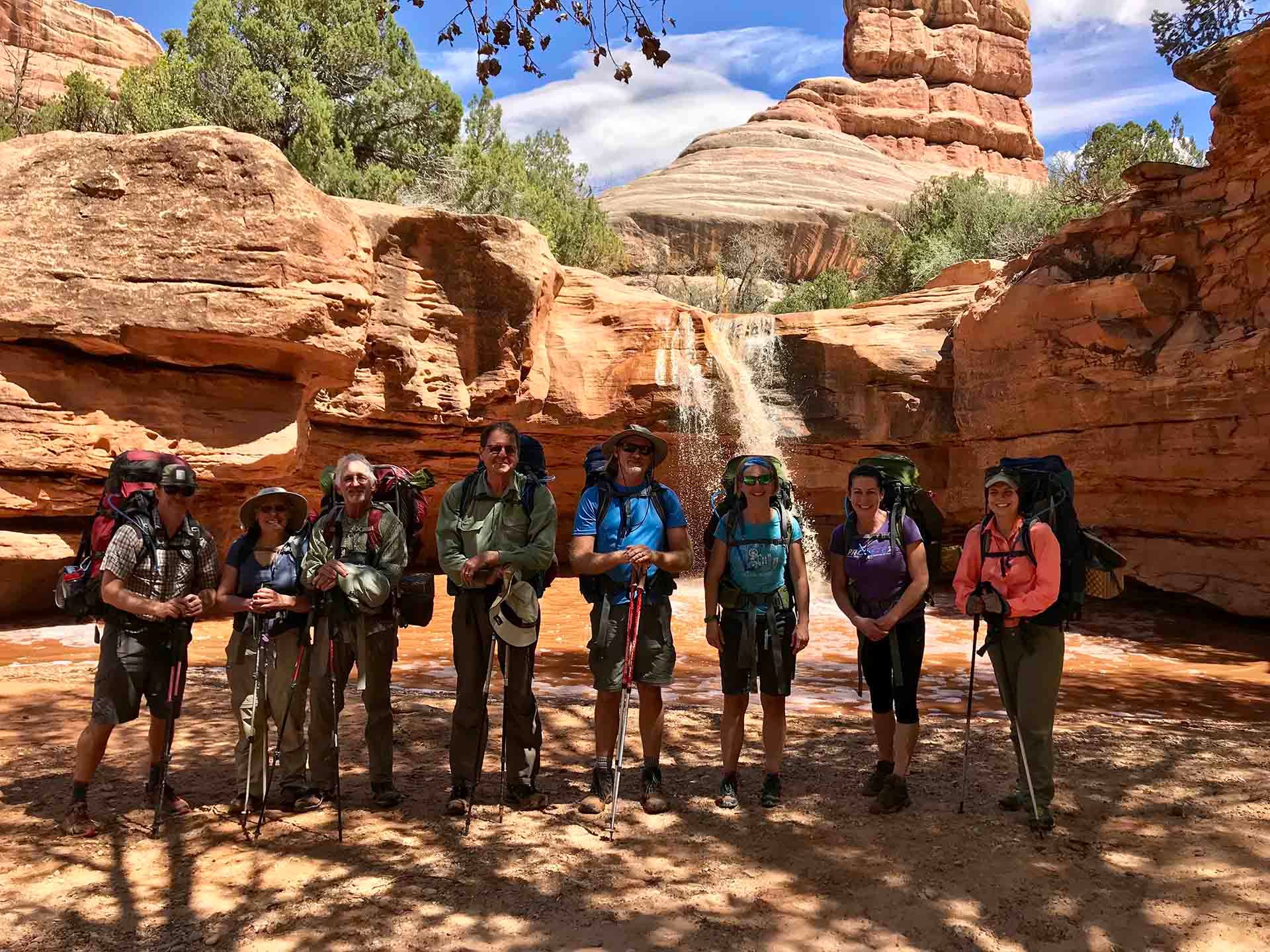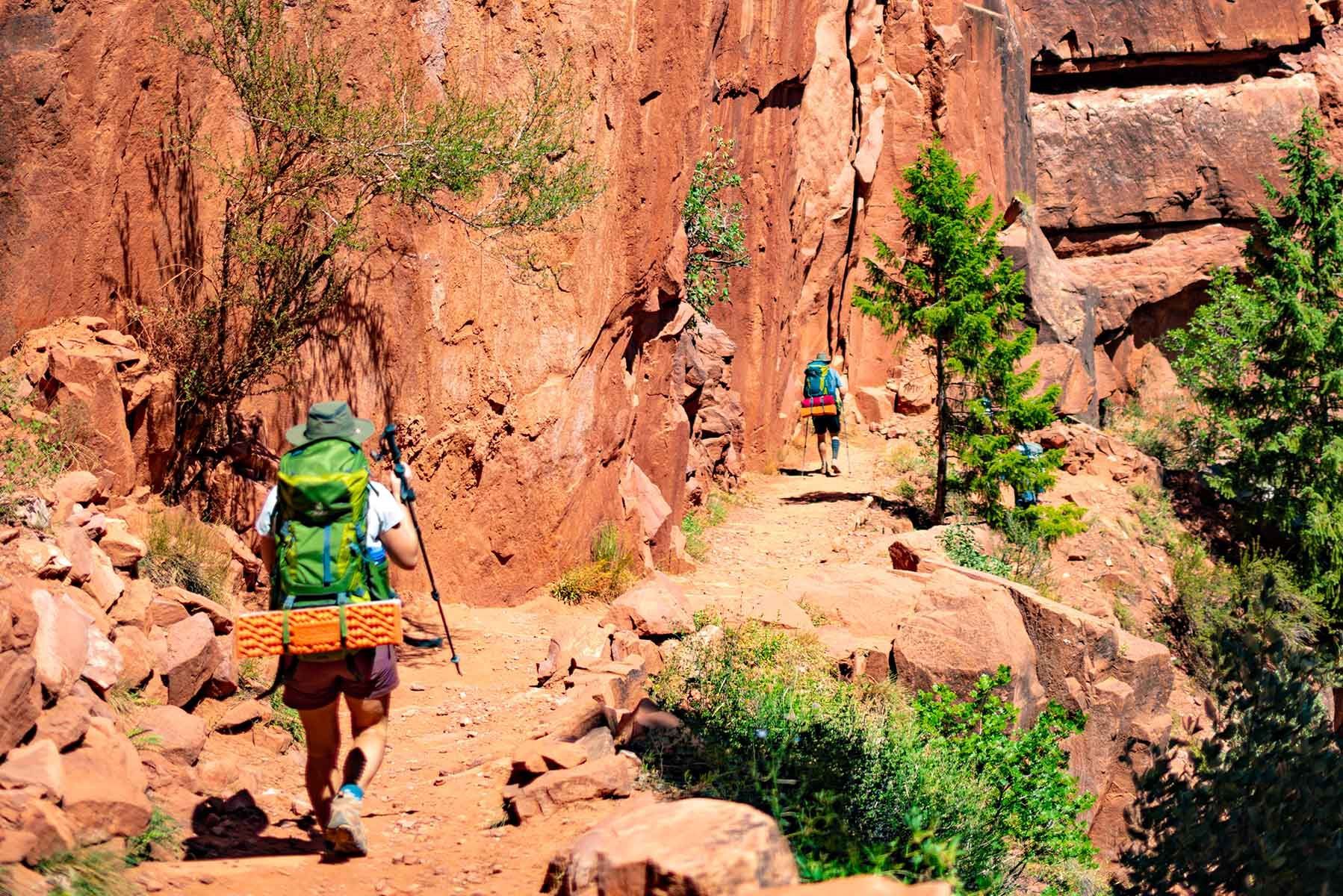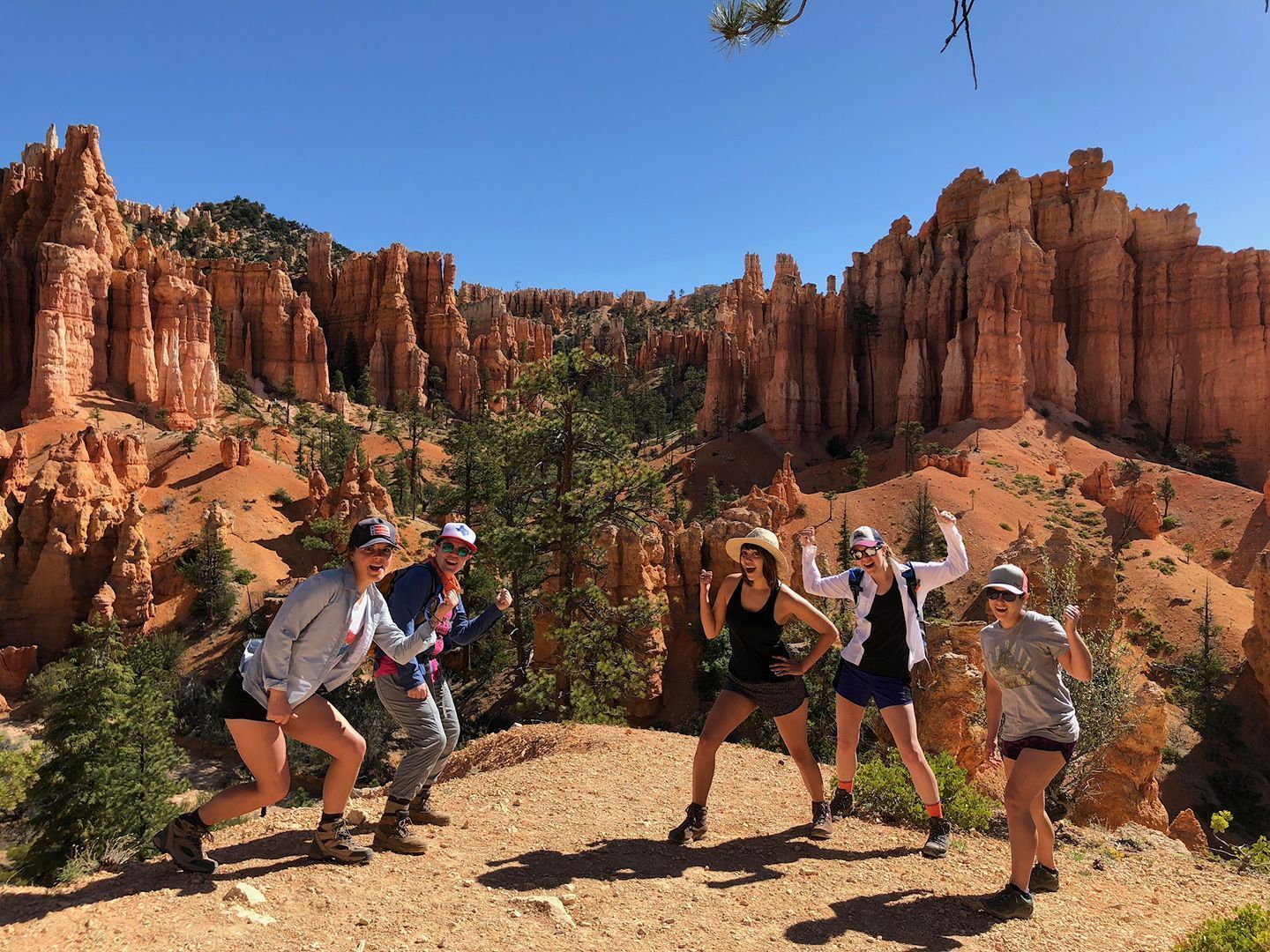5 Best Uses of Duct Tape When Backpacking
Key Takeaways
- Duct tape is a backpacker’s best friend, serving as an essential multi-use tool for first aid, quick repairs, and gear protection on challenging trails like the Grand Canyon.
- Prevent blisters and hotspots easily by applying duct tape for feet or boots—an effective, lightweight alternative to bulky medical kits.
- Fix gear fast on the trail — from patching tents and hydration bladders to reinforcing pack straps, duct tape ensures your adventure doesn’t stop for small mishaps.
- Think creatively with duct tape, turning it into makeshift utensils, zipper pulls, or reinforced edges for fray-prone gear to stay organized and functional.
- Pack smart by wrapping duct tape around trekking poles or bottles, reducing bulk while ensuring you’re always ready for trail emergencies or unexpected repairs.
- Join Four Season Guides for expert-led backpacking adventures, where experience, preparation, and practical know-how—like using duct tape effectively—turn every hike into a safe and memorable journey.
By any reckoning the three greatest inventions of mankind are fire, the wheel and duct tape – not necessarily in that order. Duct tape when backpacking will certainly be the most versatile tool you drop into your backpack. Let’s explore some of its uses.

1. First-Aid
A piece of duct tape can do duty as a bandage on its own or as a protective guard over a medical bandage protecting a sensitive spot. Use duct tape for blisters or apply duct tape on boots to avoid friction.
Experienced hikers sometimes use duct tape for feet to prevent hotspots. And it is unrivaled in removing thorns or a passel of cactus spines after an unfortunate brush against one of these heavily armed desert dwellers.
Just press a piece of duct tape sticky side down and lift gingerly away. This is especially useful on Four Season Guides hikes where terrain can be challenging, especially on Grand Canyon trails.
2. Repairs
Duct tape is the quick fix for a gash in a tent, a tear in your backpacking gear or a puncture in your hydration bladder. For heavy duty work, a few strips of tape can restore your trekking pole to action. That’s especially handy on demanding hikes like our Rim to Rim Backpacking Trip.
Duct tape shoe repair is invaluable for quick fixes on the trail. Duct tape can also be used as a temporary fix for battered hiking boots but be aware that if you wrap the tape around the sole it will likely only last an hour or so of hiking before being worn away.
Duct tape is the answer for holding pieces of your boot together while gluing the sole back together. Duct tape on shoes or duct tape strips also come in handy for minor gear failures, and duct tape strap can replace a broken pack strap in a pinch.
Always carry duct tape wrapping for emergencies.

3. Architectural Building Blocks
Only a lack of imagination tethers your duct tape to the inside of your backpack. It can be wadded and fashioned into nearly anything.
A makeshift spoon or cup? Check. An extender for eyewear to keep sunglasses from bounding off your head on the trail? Check. An entire pair of sunglasses or reflective hat? Check. A zipper pull for a recalcitrant fastener? Check.
Using duct tape creatively can solve unexpected trail challenges. Consider duct electrical packing idea for securing fragile items during your hikes.
4. Organizer
Tape small size items together for storage inside your backpack. Use duct tape on luggage to secure compartments.
Backpack strap loop can be reinforced with a strip of duct tape to keep gear from shifting. The versatile adhesive can even serve as luggage tape for emergency repairs or identification.
5. Edging
Any item you carry on a backpacking trip that can fray or tear can be toughened up by protecting the edges with strips of duct tape.
The familiar large rolls of duct tape are unnecessarily bulky and most likely an excess of tape.
Smaller rolls designed for backpacking trips can be purchased from outfitters but most experienced trail users prefer to carry strips of duct tape wrapped around torches, trekking poles, water bottles and the like.
But if you are using borrowed gear always ask before loading up with the sticky wonder.
Frequently Asked Questions
Discover the most practical and creative ways to use duct tape while backpacking — from first aid to gear repairs and organization tips.
What are the best ways to use duct tape when backpacking?
Duct tape can patch tears in gear, protect against blisters, reinforce straps, and even serve as makeshift tools or organizers. It’s a lightweight fix-all that helps you manage emergencies and repairs on the trail.
Can you use duct tape for first aid on the trail?
Yes. Duct tape can secure bandages, prevent blisters, or protect hotspots on your feet. It also works for removing cactus spines or thorns by pressing and gently lifting. It’s not a medical replacement but a reliable temporary fix in outdoor conditions.
How can duct tape repair hiking gear?
Use duct tape to mend rips in tents, backpacks, or sleeping pads. It can temporarily seal punctures in hydration bladders, reinforce trekking poles, or keep boot soles attached until you can make a proper repair.
Is duct tape safe to use on skin?
It’s generally safe for short-term use on unbroken skin to prevent friction or protect blisters. However, avoid applying it to open wounds or leaving it on too long, as the adhesive may irritate sensitive skin.
How do you carry duct tape when backpacking?
Instead of bulky rolls, wrap strips of duct tape around trekking poles, water bottles, or flashlight handles. This saves space and keeps tape handy for quick use on the trail.
Can duct tape help prevent blisters while hiking?
Yes. Apply small strips of duct tape to common friction points before hiking. This reduces rubbing and prevents blisters, especially during long or steep hikes.
What creative uses does duct tape have outdoors?
Beyond repairs, duct tape can be shaped into tools like cups or spoons, turned into a zipper pull, or used to make straps or grips. With a little creativity, it can replace many small camping items in a pinch.
Can you use duct tape to organize gear?
Definitely. Duct tape can bundle small items together, reinforce loops or straps, and even label or color-code gear. It’s a simple way to keep your backpack tidy and efficient.
What kind of duct tape is best for backpacking?
Choose a durable, lightweight duct tape designed for outdoor or repair use. Many outfitters sell smaller rolls for backpacking, but pre-wrapping strips around gear is the most efficient method.
How long will duct tape repairs last on the trail?
Temporary duct tape fixes, like boot or tent patches, typically last several hours to a day depending on terrain and weather. It’s a short-term solution meant to hold until you can make a permanent repair later.
Why do experienced hikers always carry duct tape?
Because it’s a lightweight, versatile tool for solving multiple problems — from first aid to gear fixes. Having duct tape on hand can save time, prevent discomfort, and keep you moving safely on the trail.
Experience the Best Backpacking Adventures with FS Guides
With Four Season Guides hikes, your backpacking trips are safer, smoother, and far more enjoyable. From expert tips on duct tape on boots, duct tape for feet, and gear fixes to tackling challenging terrain, we ensure every adventure is memorable.
Join us and explore trails with confidence, knowing our guides have the knowledge, experience, and solutions to handle any trail scenario.
If you’re looking for iconic desert routes, explore our Grand Canyon Backpacking Trips. Make your next outdoor adventure easier, safer, and more fun with FS Guides.
Curious why outdoor lovers keep coming back to FS Guides? Prefer comfort after a long trek? Check out our Lodge-Based Adventures for guided hiking with cozy accommodations. Check out our Google Business Profile Reviews and discover what guests are saying about their unforgettable hiking and backpacking experiences.
Four Season Guides, 506 N Grant St suite o, Flagstaff, AZ 86004, United States
+19285251552
35.19653980, -111.62000560





